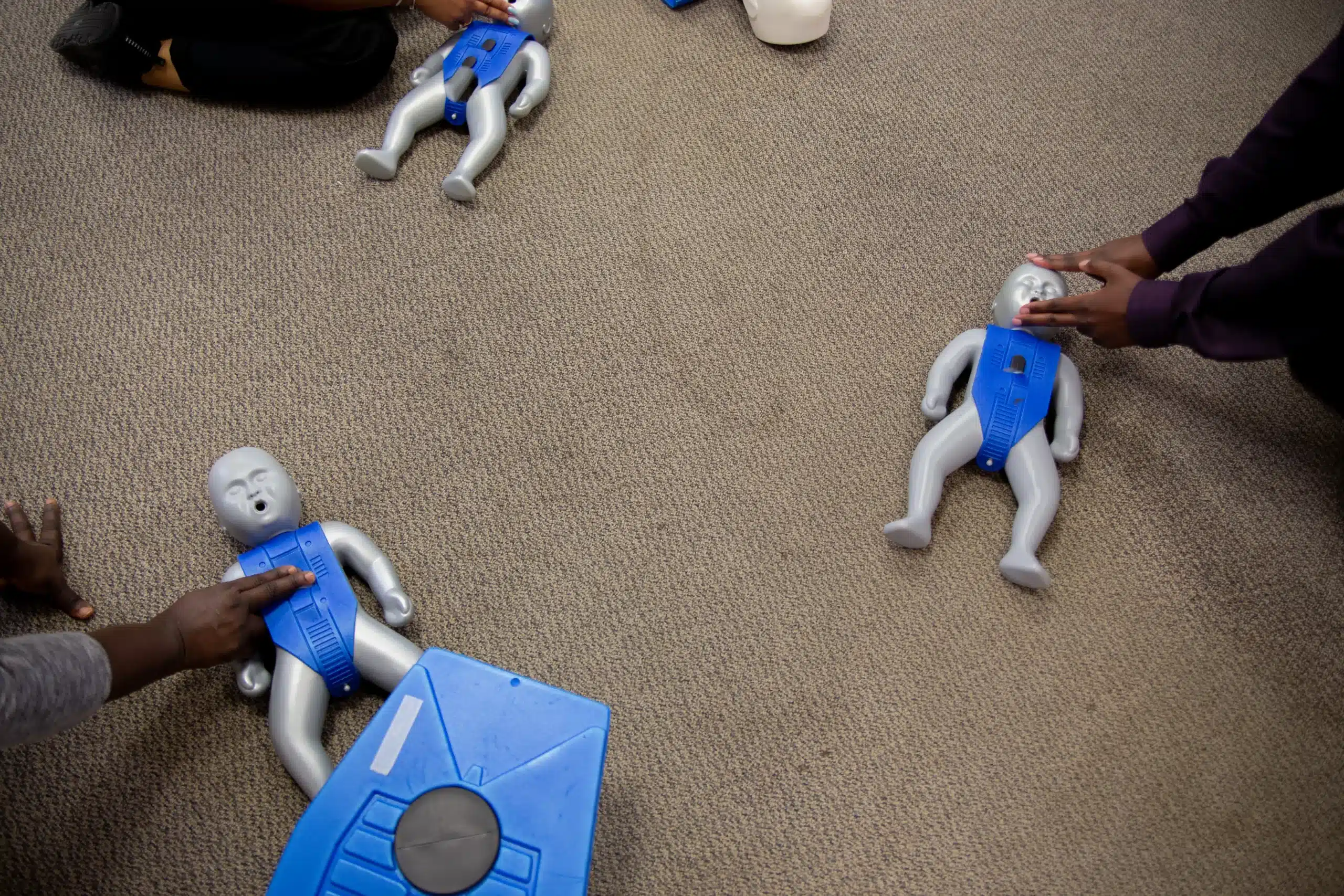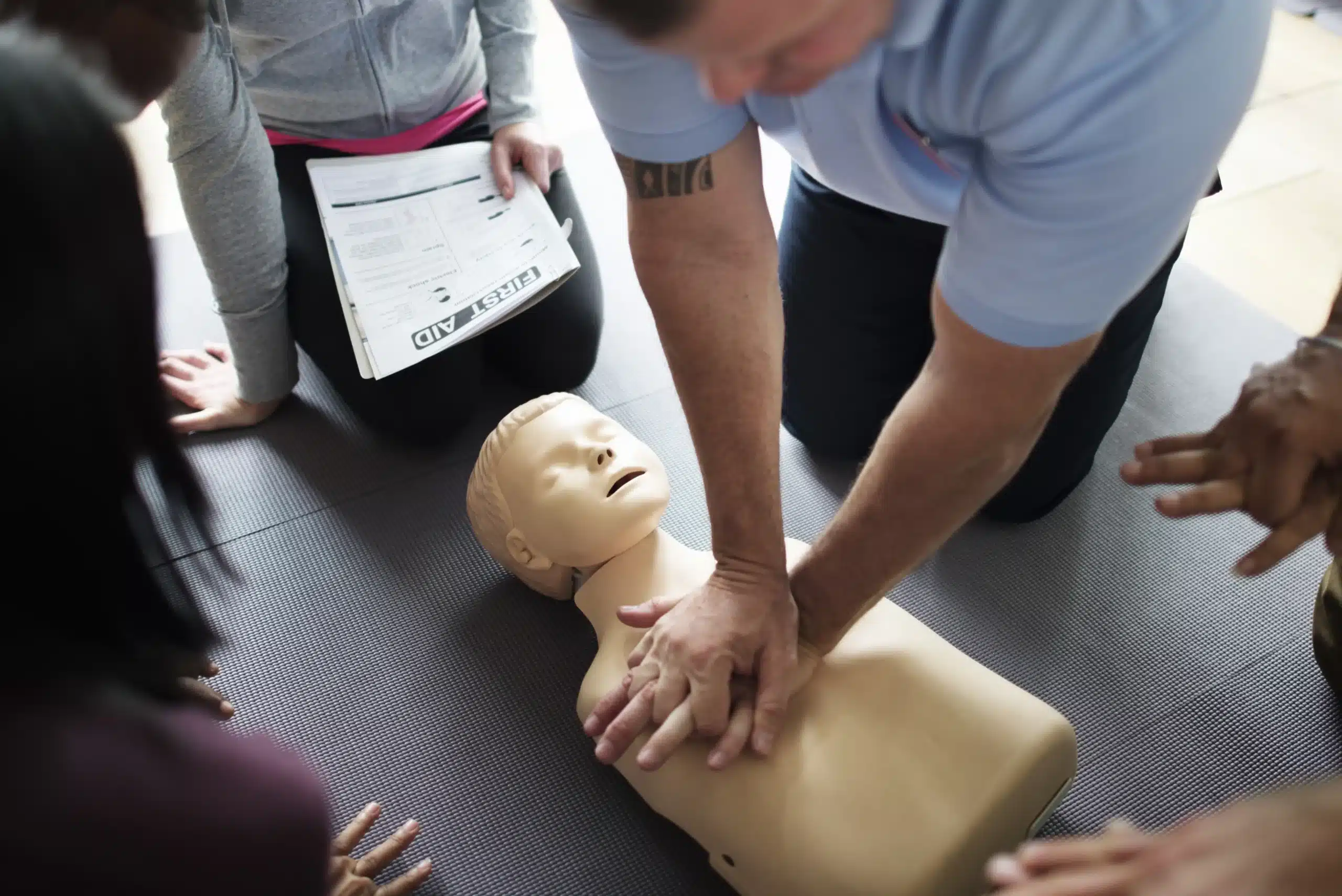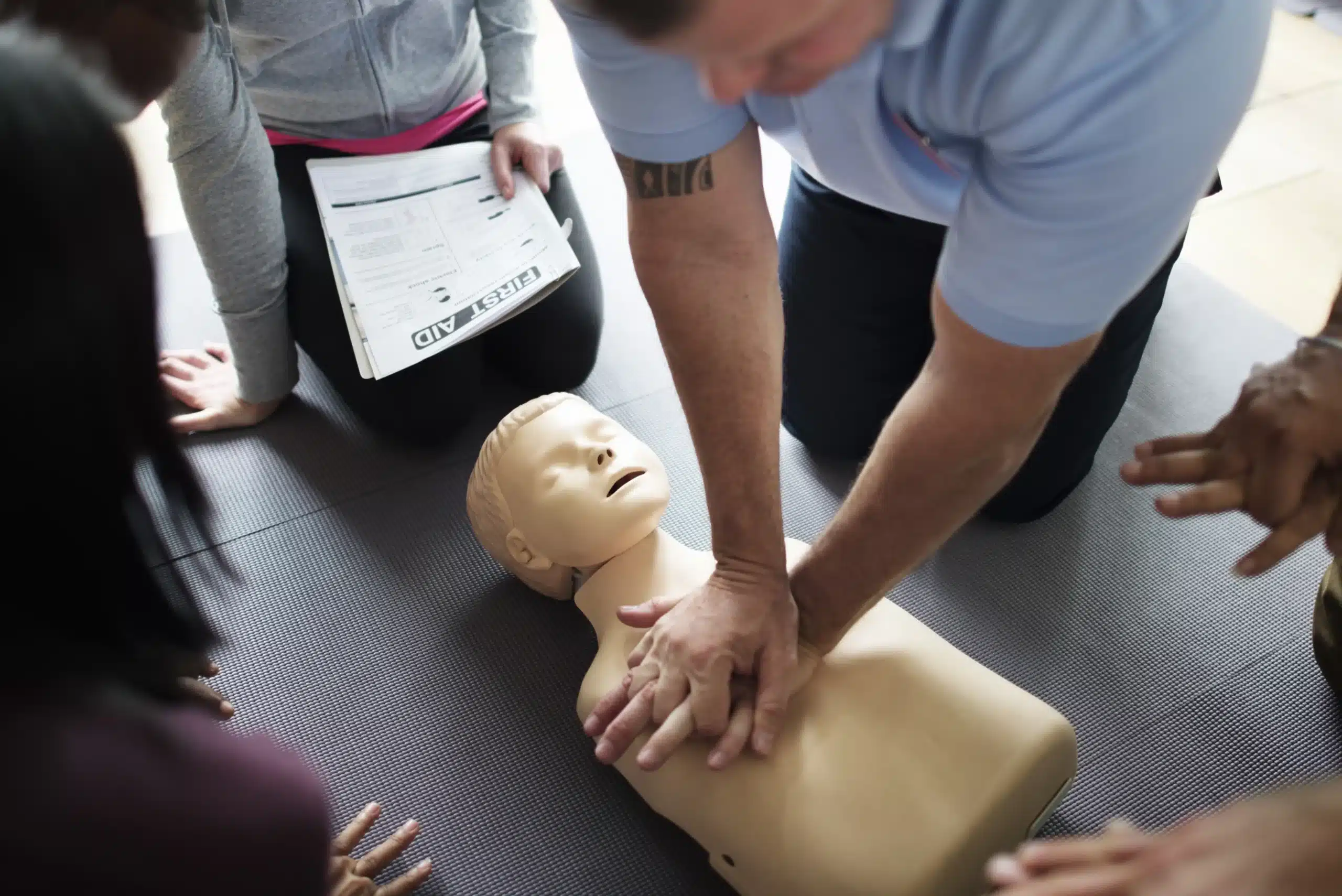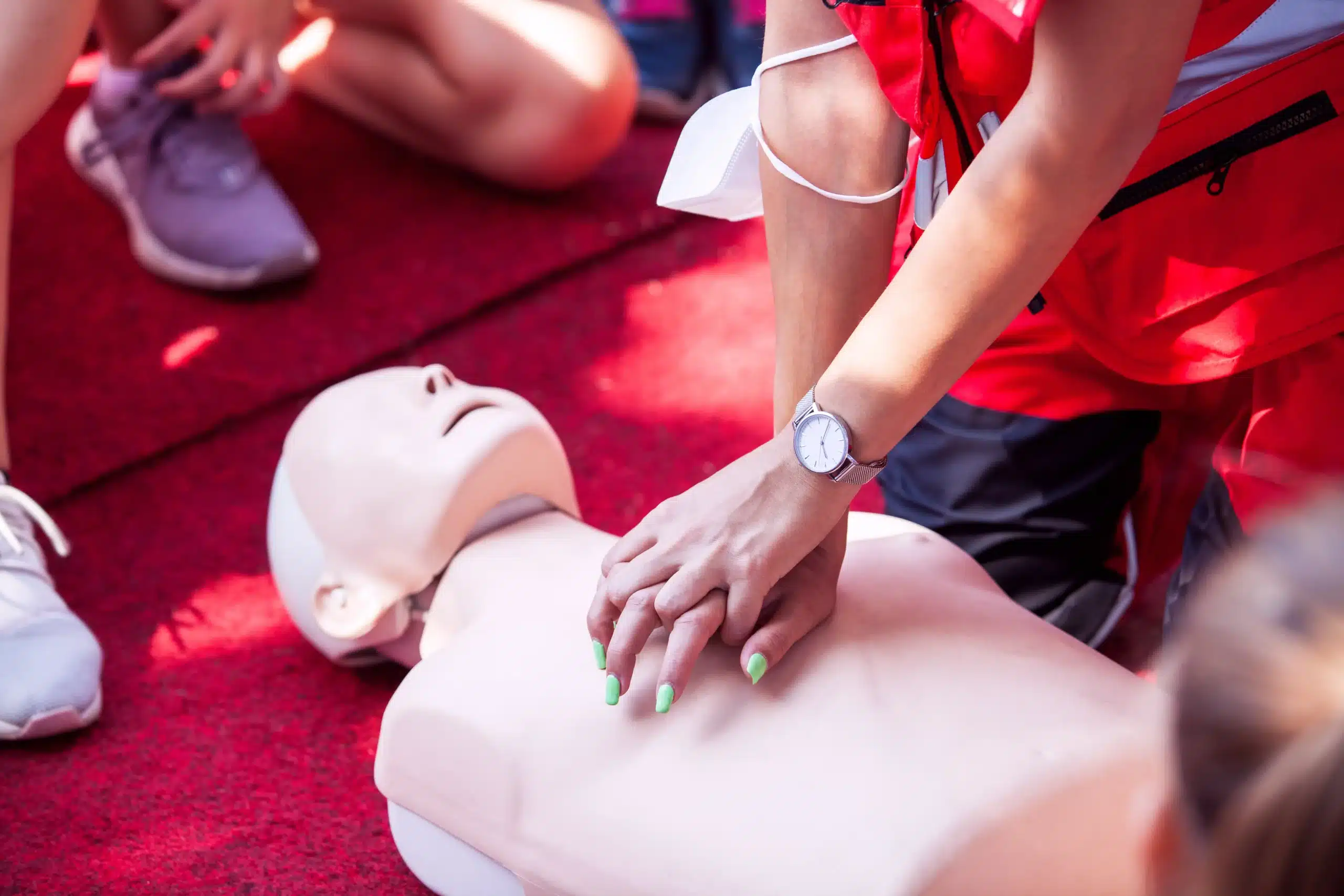Empower yourself with the knowledge and skills to save a life by learning CPR. This comprehensive guide explores the world of CPR training, from basic techniques to advanced life support. We’ll help you find “CPR courses near me,” compare different certification organizations, and understand the costs and time commitment involved. Whether you’re a medical student, a concerned parent, or simply someone who wants to be prepared for emergencies, this guide provides valuable insights into choosing the right CPR course. We’ll also debunk common CPR myths, discuss the benefits of certification, and emphasize the importance of maintaining your CPR skills through regular practice and renewal.
Key Takeaways
- CPR skills empower you to save lives: Whether you’re a healthcare professional or a concerned citizen, learning CPR and first aid provides you with the tools to respond effectively in medical emergencies. Find a course that aligns with your individual needs and make a difference in your community.
- Select the right CPR course for your goals: Consider factors such as the type of certification, course content, and the credibility of the training organization. Compare costs, schedules, and learning formats (online or in-person) to find the perfect match.
- Stay current with your CPR training: CPR certifications expire, so renew your training regularly and participate in continuing education courses to maintain your skills and stay up-to-date with the latest guidelines. This ensures you’re always prepared and confident in your ability to provide assistance when it matters most.
What are CPR Courses & Why are They Important?
CPR (Cardiopulmonary Resuscitation) courses teach you how to respond when someone’s breathing or heartbeat has stopped. These courses cover the fundamentals of CPR, including chest compressions and rescue breaths, which maintain blood flow to the brain and other vital organs during cardiac arrest. Effective bystander CPR can double or even triple survival rates in cases of cardiac arrest, highlighting the importance of training. CPR courses equip you with the skills and confidence to act in emergencies, whether at home, in the workplace, or in public. Redwood City CPR Classes offers CPR and First-Aid certification to help you prepare for such situations. With so many cardiac arrests occurring annually, knowing CPR can make a significant difference.
CPR Courses Near You
Finding the right CPR course is the first step. Whether you’re a medical professional, a childcare provider, or just someone who wants to be prepared for emergencies, there’s a course out there for you. Let’s explore the different types of CPR training available in Redwood City and nearby areas like Palo Alto and Menlo Park.
Basic CPR: The Foundation
Basic CPR courses provide the essential skills to respond to cardiac arrest and choking emergencies in adults, children, and infants. You’ll learn how to perform chest compressions, rescue breaths, and use an automated external defibrillator (AED). These foundational courses are perfect for anyone, from concerned parents and teachers to those working in gyms or other community settings. Redwood City offers various CPR and first-aid courses, from basic to advanced, with flexible schedules.
Advanced CPR for Healthcare Professionals
Healthcare providers, such as doctors, nurses, and paramedics, require more advanced training. Courses like Basic Life Support (BLS), Advanced Cardiovascular Life Support (ACLS), and Pediatric Advanced Life Support (PALS) cover a broader range of life-saving techniques. These certifications are often mandatory for employment in healthcare settings. Redwood City CPR Classes offers these advanced courses, ensuring medical professionals can maintain their certifications and stay up-to-date with the latest guidelines. Our innovative RQI program helps medical professionals efficiently obtain their certification cards.
Pediatric CPR: Specialized Training for Children
Pediatric CPR focuses on the specific needs of infants and children. While basic CPR courses often include pediatric components, specialized training delves deeper into resuscitation techniques for younger age groups. This is especially relevant for childcare providers, teachers, and parents. Some companies offer add-on training to their CPR and AED classes, such as $5 per student to learn about infant CPR.
Online vs. In-Person CPR Training
Deciding between online and in-person CPR training depends on your learning style and needs. In-person classes offer hands-on practice and direct interaction with instructors, which can be beneficial for mastering physical skills. Online CPR training can be a great option for people looking to learn layperson CPR. However, for certifications like BLS, ACLS, and PALS, in-person training is typically required due to the complexity of the skills and the need for hands-on evaluation. Redwood City CPR Classes offers both in-person and blended learning options to cater to different preferences. We also offer group discounts for those training together. Check our low price guarantee.
CPR Course Costs & Duration
Knowing the costs and time commitment associated with CPR training is essential for planning your certification journey. This section breaks down the typical expenses and course lengths to help you prepare.
CPR Course Costs
CPR course fees vary depending on several factors, including the level of certification, the training provider, and your location. A basic two-hour CPR and AED course typically costs around $35 per person. Group discounts are often available, making it more affordable for workplaces to train their teams. For a group of eight or more, employers can expect to pay around $280 for a CPR class. More comprehensive certifications, such as those offered by the American Heart Association (AHA) and the American Red Cross, usually range from $70 to $150. These courses often cover a broader range of skills and may include additional certifications. Redwood City CPR classes offers a low price guarantee.
Additional Fees & Discounts
While the base course fee covers the core curriculum, be aware of potential add-on costs. Some providers offer supplemental training, such as infant CPR, oxygen administration, or bloodborne pathogen training, for an additional fee. These add-ons can range from $5 to $15 per student. Always inquire about the total cost, including any extras, when registering for a course. Many training centers, including Redwood City CPR Classes, offer discounts for groups and students, so be sure to ask.
Course Length & Time Commitment
The time commitment for CPR training varies depending on the course type and the certifying organization. Basic CPR certification can often be completed in a single two-hour session. More advanced courses, like ACLS or PALS, require a more significant time investment. Many providers offer flexible scheduling options, including evening and weekend classes, to accommodate busy schedules. Check with your chosen provider for their specific course schedules and availability.
Top CPR Certification Organizations
Finding the right CPR certification often starts with choosing a respected organization. Several organizations offer credible certifications, each with its own approach. Let’s look at some of the leading options to help you decide which best suits your needs.
American Red Cross
The American Red Cross is a well-known humanitarian organization offering a range of CPR classes and certifications across the country. They focus on making their courses accessible, providing various class times and locations to accommodate busy schedules. Small group classes are common, allowing for more personalized instruction and individual feedback.
American Heart Association
The American Heart Association (AHA) provides various CPR and first-aid training programs. The AHA offers everything from basic life support to more advanced certifications. Course costs will depend on the program, location, and training center.
Redwood City CPR Classes
Redwood City CPR Classes offers a comprehensive selection of American Heart Association courses, including BLS, ACLS, PALS, and First Aid. They work with both healthcare providers seeking recertification and members of the general public wanting to learn these vital skills. Serving Palo Alto, Redwood City, and Menlo Park, they offer convenient local training. Check out their low price guarantee and group discounts.
Local CPR Training Options
Beyond these larger organizations, many local options exist for CPR training. A quick online search for “CPR certification near me” or “CPR classes in [your city]” will generate a list of providers in your area. You can also check with community centers, hospitals, and fire departments, which often offer CPR courses.
Benefits of CPR Training
Learning CPR offers significant advantages, from personal safety to career advancement and having a positive impact on your community. Let’s explore these benefits:
Personal Safety Skills
CPR and first-aid certification courses give you the skills and confidence to handle emergencies. Whether at home, work, or in public, you’ll be prepared to respond to various situations, including cardiac arrest, choking, and other medical crises. This knowledge empowers you to act quickly and potentially save a life, providing peace of mind for you and your loved ones.
Career Advancement
For many healthcare professionals, CPR certification is a job requirement and demonstrates a commitment to patient care. AHA certification is widely recognized and aligns with national standards, making your resume more competitive and opening doors to new opportunities. Hands-on training with mannequins and AEDs ensures you’re prepared for real-life scenarios, a crucial asset in healthcare and emergency response fields. Even outside of healthcare, CPR certification can enhance your professional profile by showcasing your preparedness and ability to handle critical situations.
Community Impact
CPR training creates safer and more resilient communities. By becoming certified, you become a valuable resource. Effective bystander CPR can dramatically improve survival rates in cardiac arrest cases. Your training can make a real difference in someone’s life, contributing to the overall well-being of your community. CPR training empowers individuals to take action and provide immediate assistance when every second counts.
Choosing the Right CPR Course
So, you’ve decided to get CPR certified—fantastic! But with various courses available, how do you choose the right one? This section breaks down key factors to consider when selecting a CPR class that fits your specific needs.
Assess Your Needs & Goals
First, think about why you’re pursuing CPR certification. Are you required to have it for your job, or are you learning it for personal knowledge? Do you need basic life support skills, or are you a healthcare provider requiring more advanced training? Understanding your goals will guide you toward the appropriate course level. For instance, if you work in healthcare, you’ll likely need ACLS or PALS certification in addition to basic CPR. If you’re a parent or caregiver, a basic CPR and first-aid course might be perfect. Redwood City CPR Classes offers a variety of courses, so you can find the right fit.
Compare Course Content & Recognition
Not all CPR certifications are created equal. It’s essential to choose a course that aligns with nationally recognized standards. Look for programs certified by reputable organizations like the American Heart Association (AHA). AHA certification ensures your training is high-quality and widely accepted. Also, compare course content. Some courses may include additional training, such as AED use or first aid. Be sure to check if the certification you choose meets the requirements of your workplace or licensing board. While the AHA and Red Cross offer similar training, there can be cost differences, so it’s worth comparing pricing.
Balance Schedule & Location
Finally, consider logistics. Where are classes offered, and do they fit your schedule? Finding a course nearby can save you travel time. A quick online search for “CPR certification near me” can help you locate local providers. Redwood City CPR Classes offers a flexible schedule, with classes running daily, accommodating busy professionals and students. Think about whether you prefer in-person or online learning. Both have their advantages, so choose the format that best suits your learning style and availability. Redwood City CPR Classes offers group discounts, which can be a great way to save money if you’re signing up with friends or colleagues.
CPR Training Myths Debunked
Let’s clear up some common misconceptions about CPR training. These myths can discourage people from learning this life-saving skill, so let’s set the record straight.
-
Myth: Chest compressions alone are ineffective. Some believe that rescue breaths are the most important part of CPR. Actually, consistent, firm chest compressions are crucial for circulating blood and oxygen. They can significantly improve someone’s chances of survival, even without rescue breaths. Doing them correctly can buy valuable time until medical professionals arrive. Don’t hesitate to start compressions—they can make all the difference. For more information on the effectiveness of chest compressions, check out this article on CPR myths.
-
Myth: CPR always revives someone. It’s important to have realistic expectations. CPR is a vital intervention, but it doesn’t guarantee survival. Various factors influence the outcome of a cardiac arrest. Understanding this fact doesn’t diminish the importance of CPR; rather, it emphasizes the need for immediate action and the value of every attempt. Learn more about CPR facts.
-
Myth: Only medical professionals should perform CPR. Absolutely not true! Anyone can learn and perform CPR. Bystanders are often the first on the scene of an emergency, and their actions can be life-saving. Don’t let a lack of professional medical training stop you from helping—your willingness to act can bridge the gap before paramedics arrive. This article addresses common CPR misconceptions and emphasizes the importance of bystander intervention. Redwood City CPR Classes offers CPR courses for everyone, regardless of background.
-
Myth: CPR restarts a heart. CPR doesn’t actually restart the heart. Its purpose is to maintain blood circulation and oxygen flow to vital organs until advanced medical help arrives. It’s a bridge of life support, keeping the body functioning until a defibrillator or other medical interventions can be used. Here are five important CPR facts to know. Our BLS course covers this critical information in detail.
-
Myth: You must be certified to perform CPR. While certification demonstrates competency and is highly recommended, you don’t need to be certified to perform CPR in an emergency. In a life-or-death situation, acting quickly is paramount. Any attempt at CPR is better than none. This article debunks first aid misconceptions. However, getting certified through a reputable organization like Redwood City CPR Classes provides you with the knowledge and confidence to act effectively. We offer a low price guarantee, making quality training accessible to everyone. Explore our ACLS course for more advanced life support training.
Maintain Your CPR Skills
CPR isn’t a learn-it-and-forget-it skill. Regularly refreshing your training is key to staying sharp and confident in your abilities. This section covers how to maintain your CPR skills through renewal and continuing education.
CPR Renewal Requirements
CPR certifications don’t last forever. Online CPR certifications are typically valid for two to three years, but it’s crucial to confirm the specifics with your certifying organization. Check with your provider, like the American Heart Association, to understand their renewal policies and ensure your certification remains active. Don’t let your certification lapse—staying current can make all the difference in a real emergency. Knowing precisely when your certification expires helps you plan ahead and avoid any gaps in your qualifications.
Continuing Education
Even if your certification is still valid, consider taking refresher courses and update training. Redwood City CPR Classes offers various continuing education options to keep your skills sharp. These courses not only maintain your certification but also introduce you to the latest techniques and guidelines. By regularly participating in continuing education, you reinforce your knowledge and build the confidence to respond effectively in any emergency. This ongoing learning is invaluable, whether you’re at home, in the workplace, or out in public. It’s a commitment to being prepared and empowered to help when it matters most. Plus, refreshing your skills demonstrates your dedication to providing the highest quality care.
Find CPR Courses Near You
Now that you understand the different types of CPR courses and their benefits, let’s find the right one for you. This section covers everything from locating nearby classes to evaluating course quality and asking the right questions before you enroll.
Online Search Tools & Local Resources
Finding a CPR course near you is easier than ever. Start with a simple online search using keywords like “CPR certification near me” or “CPR classes in Redwood City.” This will generate a list of local training providers, including established organizations like the American Red Cross and independent CPR training centers. For a more targeted search, consider using a CPR class finder like CPRClassFinder. Don’t forget to tap into local resources like community centers, hospitals, and even your workplace. Personal recommendations can also be valuable, so ask friends, family, or colleagues if they have any suggestions.
Evaluate Course Quality
Not all CPR courses are created equal. It’s essential to evaluate the quality and credibility of the program before signing up. Whether you’re leaning toward an online or in-person course, ensure the curriculum aligns with current American Heart Association guidelines. Check if the program includes hands-on practice and uses certified instructors. While online CPR training offers flexibility, confirm that it includes a practical skills evaluation to ensure you’re truly prepared. Research suggests online and in-person learning can be equally effective, so choose the format that best fits your needs.
Questions to Ask Before Enrolling
Before committing to a CPR course, gather all the necessary information. Ask about the course format, class size, instructor qualifications, and the type of certification provided. Inquire about the total cost, including any extra fees for materials or recertification. If you’re taking the course for your job or to obtain a license, confirm the certification meets the requirements. Finally, ask about the provider’s refund policy in case your circumstances change. Choosing the right CPR course is an investment, so take your time to find the perfect fit.
Related Articles
- Why CPR is Important in Healthcare – Complete Guide
- CPR Training in Menlo Park: Your Complete Guide – Redwood City CPR Classes
- CPR Certification in Redwood City: A Complete Guide
- Debunking Common CPR Myths for Potential Lifesavers
- Advanced Cardiac Life Support (ACLS) in Menlo Park – Redwood City CPR Classes
Frequently Asked Questions
What kind of CPR training do I need? That depends on your situation. If you’re a healthcare professional, you’ll likely need BLS, ACLS, or PALS certification. For most others, a basic CPR and first-aid course is a great starting point. If you work with children, consider adding pediatric CPR training. Think about where you’ll use your skills most and choose accordingly.
How long does CPR certification last, and how do I renew it? CPR certifications are typically valid for two years, although this can vary. Check with your certifying organization, such as the American Heart Association or the American Red Cross, for their specific renewal process. Usually, you’ll need to retake the course to renew your certification.
How much do CPR courses cost? Costs vary depending on the course type, provider, and location. Basic CPR courses usually range from $35 to $75, while more advanced certifications like ACLS and PALS can cost more. Many providers offer group discounts, so check for those if you’re training with others.
What’s the difference between online and in-person CPR training? In-person classes provide hands-on practice and direct interaction with an instructor, which many find beneficial for mastering the physical skills. Online courses offer more flexibility, allowing you to learn at your own pace. However, most certifying organizations require an in-person skills evaluation, even for online courses.
How do I find CPR classes near me? A quick online search for “CPR classes near me” is a great place to start. You can also check with local hospitals, community centers, and fire departments, as they often offer CPR training. CPR class finder websites can also help you locate courses in your area.






